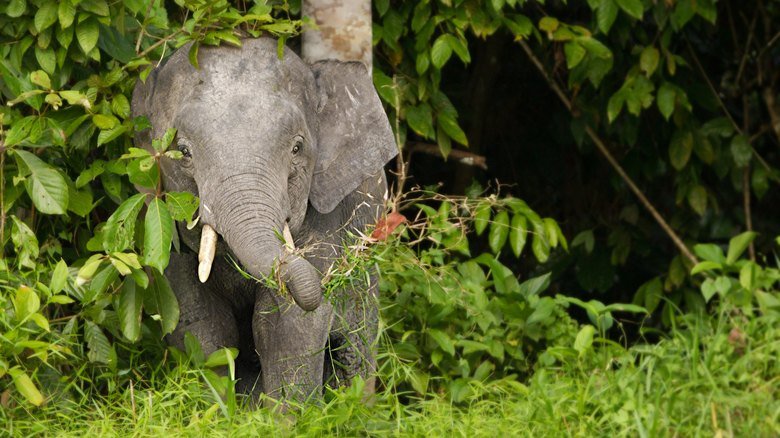African Wild Dog
African wild dogs, also known as painted dogs or painted wolves, are the largest canids in Africa and the second largest in the world after wolves. Historically destroyed as "problem animals" because of conflicts with livestock, their populations have long been declining and they are now considered Endangered. There are only around 1,400 mature wild dogs left in the wild.
Komodo Dragon
Fewer than 3,500 Komodo dragons remain. They once lived across a huge range, spanning Indonesia’s islands and Australia, but since the 1970s, Komodo National Park has been the only place in the world where they can be found. Often weighing more than 300 pounds, these giant lizards can grow up to 10 feet long, run as fast as 12 miles (19 km) per hour, smell blood from almost 6 miles away, and deliver a powerful bite with venom strong enough to kill a human.
Giant Anteater
The giant anteater is one of the most unique mammals in the world. They are the most endangered mammal in Central America, and fewer than 5,000 are thought to remain across their range.
Sunda Pangolin
So few of these mysterious animals remain that scientists have been unable to estimate their population. Sunda pangolins are one of the world's most trafficked mammals. Over a million pangolins worldwide are estimated to have been poached from the wild since 2000, and they are predicted to decline by an additional 80% within the next two decades if they are not protected. GC is working across five national parks and World Heritage Sites in Asia to help save this critically endangered species.
Clouded Leopard
There are two species of clouded leopard in the world, and GC sites have both of them! Just a few thousand individuals of both clouded leopard species remain across their ever-shrinking range in Asia.
Harpy Eagle
Fewer than 450 harpy eagles are likely to remain in Panama. Harpy eagles are enormous birds of prey, tied for the title of world's largest eagle. They are found in rainforest habitats throughout much of South and Central America, and are threatened primarily by deforestation.
European Mink
Fewer than 100 European mink survive in Ukraine. One of the most endangered mammals in Europe, the European mink's range has been reduced by over 85% since the mid-19th century. The remaining population is small, fragmented, and declining, but Ukraine's Carpathian National Nature Park contains up to 20 breeding pairs.
African Lion
Just 400 lions survive in Uganda. African lions are the largest and most imposing carnivore in Africa and the only true social cats, and they have special cultural significance in most countries on the continent. Unfortunately, African lion numbers have plummeted by over 40% in the last three generations due to loss of habitat and conflict with people. Three-quarters of African lion populations are in decline.
African Savanna Elephant
African savanna elephants are the largest terrestrial mammal on Earth. Though they once roamed throughout sub-Saharan Africa, their range has become increasingly small due to poaching and habitat loss. After rampant demand for their tusks, just 20 super tuskers remain.
African Forest Elephant
Due to decades of heavy poaching, just 400 African forest elephants remain in Cameroon. Like their savannah and Asian cousins, African forest elephants can live for up to 65 years and are considered "gardeners of the forest." Compared to savanna elephants, the forest elephant is in much more serious danger of becoming extinct.
Sumatran Rhino
As few as 30 Sumatran rhinos survive in the wild, making them one of the rarest, most endangered mammals in the world. We're working to help protect the largest surviving population in the Leuser Ecosystem of Indonesia.
Borneo Pygmy Elephant
Around 1,500 Borneo pygmy elephants remain. The Borneo pygmy elephant is the smallest subspecies of Asian elephant, endemic to the island of Borneo. They are one of the least-studied elephants in the world.
Indochinese Tiger
Only 220 Indochinese tigers remain in the wild, with most of them in Thailand. The Indochinese tiger is a critically endangered population of tiger native to Southeast Asia, though it now only occurs in Thailand and Myanmar.















